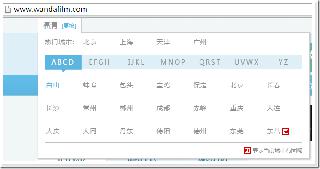Spring和SpringBoot之間的區別
在本教程中,我們將研究標準Spring框架和Spring Boot之間的區別。
我們將重點討論Spring的模塊,如MVC和Security,在核心Spring中使用時與在Boot中使用時的區別。
Spring是什么?簡單地說,Spring框架為開發Java應用程序提供了全面的基礎設施支持。
它包含了一些很好的功能,比如依賴注入,以及一些現成的模塊,比如:
Spring JDBC Spring MVC Spring Security Spring AOP Spring ORM Spring Test這些模塊可以大大縮短應用程序的開發時間。
例如,在java web開發的早期,我們需要編寫大量樣板代碼來將記錄插入到數據源中。通過使用springjdbc模塊的JDBCTemplate,我們可以用很少的配置將它簡化為幾行代碼。
Spring Boot是什么?Spring Boot基本上是Spring框架的擴展,它消除了設置Spring應用程序所需的樣板配置。
它對Spring平臺持固執己見的觀點,它為更快、更高效的開發生態系統鋪平了道路。
以下是Spring Boot的一些功能:
持約定優于配置的“starter”依賴關系,以簡化構建和應用程序配置 嵌入式服務器避免了應用程序部署的復雜性 度量、運行狀況檢查和外部化配置 自動配置-只要可能讓我們逐步熟悉這兩個框架。
Maven依賴項首先,讓我們看看使用Spring創建web應用程序所需的最小依賴性:
<dependency> <groupId>org.springframework</groupId> <artifactId>spring-web</artifactId> <version>5.3.5</version></dependency><dependency> <groupId>org.springframework</groupId> <artifactId>spring-webmvc</artifactId> <version>5.3.5</version></dependency>
與Spring不同,Spring Boot只需要一個依賴項即可啟動并運行web應用程序:
<dependency> <groupId>org.springframework.boot</groupId> <artifactId>spring-boot-starter-web</artifactId> <version>2.4.4</version></dependency>
在構建期間,所有其他依賴項都會自動添加到最終存檔中。
另一個很好的例子是測試庫。我們通常使用一組Spring-Test、JUnit、Hamcrest和Mockito庫。在Spring項目中,我們應該添加所有這些庫作為依賴項。
或者,在springboot中,我們只需要starter依賴項就可以自動包含這些庫。
springboot為不同的Spring模塊提供了許多啟動程序依賴項。最常用的方法有: spring-boot-starter-data-jpa spring-boot-starter-security spring-boot-starter-test spring-boot-starter-web spring-boot-starter-thymeleaf要獲得starters的完整列表,還可以查看Spring文檔:https://docs.spring.io/spring-boot/docs/current/reference/htmlsingle/#using-boot-starter
MVC配置讓我們研究一下使用Spring和SpringBoot創建jsp web應用程序所需的配置。
Spring需要定義dispatcherservlet、映射和其他支持配置。我們可以用web.xml文件或初始值設定項類:
public class MyWebAppInitializer implements WebApplicationInitializer { @Override public void onStartup(ServletContext container) { AnnotationConfigWebApplicationContext context = new AnnotationConfigWebApplicationContext(); context.setConfigLocation('com.baeldung'); container.addListener(new ContextLoaderListener(context)); ServletRegistration.Dynamic dispatcher = container .addServlet('dispatcher', new DispatcherServlet(context)); dispatcher.setLoadOnStartup(1); dispatcher.addMapping('/'); }}
我們還需要將@EnableWebMvc注釋添加到@Configuration類中,并定義一個視圖解析器來解析從控制器返回的視圖:
@EnableWebMvc@Configurationpublic class ClientWebConfig implements WebMvcConfigurer { @Bean public ViewResolver viewResolver() { InternalResourceViewResolver bean = new InternalResourceViewResolver(); bean.setViewClass(JstlView.class); bean.setPrefix('/WEB-INF/view/'); bean.setSuffix('.jsp'); return bean; }}
相比之下,在添加web starter后,Spring Boot只需要幾個屬性就可以工作:
spring.mvc.view.prefix=/WEB-INF/jsp/spring.mvc.view.suffix=.jsp
通過一個名為auto-configuration的process添加bootwebstarter,上面所有的Spring配置都會自動包含進來。
這意味著springboot將查看應用程序中存在的依賴項、屬性和bean,并基于它們啟用配置。
當然,如果我們想添加我們自己的自定義配置,那么Spring-Boot自動配置就會退出。
配置模板引擎現在讓我們學習如何在Spring和springboot中配置Thymeleaf模板引擎。
在Spring中,我們需要為視圖解析器添加thymeleaf-spring5依賴項和一些配置:
@Configuration@EnableWebMvcpublic class MvcWebConfig implements WebMvcConfigurer { @Autowired private ApplicationContext applicationContext; @Bean public SpringResourceTemplateResolver templateResolver() { SpringResourceTemplateResolver templateResolver = new SpringResourceTemplateResolver(); templateResolver.setApplicationContext(applicationContext); templateResolver.setPrefix('/WEB-INF/views/'); templateResolver.setSuffix('.html'); return templateResolver; } @Bean public SpringTemplateEngine templateEngine() { SpringTemplateEngine templateEngine = new SpringTemplateEngine(); templateEngine.setTemplateResolver(templateResolver()); templateEngine.setEnableSpringELCompiler(true); return templateEngine; } @Override public void configureViewResolvers(ViewResolverRegistry registry) { ThymeleafViewResolver resolver = new ThymeleafViewResolver(); resolver.setTemplateEngine(templateEngine()); registry.viewResolver(resolver); }}
SpringBoot只需要springbootstarter thymeleaf的依賴性就可以在web應用程序中啟用thymeleaf支持。由于Thymeleaf3.0中的新特性,我們還必須在springboot2web應用程序中添加thymeleaf-layout-dialect作為依賴項。或者,我們可以選擇添加一個springbootstarter和eleaf依賴,它將為我們處理所有這些。
一旦依賴項就位,我們就可以將模板添加到src/main/resources/templates文件夾中,Spring引導將自動顯示它們。
Spring Security 配置為了簡單起見,我們將看到如何使用這些框架啟用默認的HTTP基本身份驗證。
讓我們先看看使用Spring啟用安全性所需的依賴項和配置。
Spring需要標準的springsecurityweb和springsecurityconfig依賴項來設置應用程序中的安全性。
接下來,我們需要添加一個類來擴展WebSecurityConfigureAdapter并使用@EnableWebSecurity注釋:
@Configuration@EnableWebSecuritypublic class CustomWebSecurityConfigurerAdapter extends WebSecurityConfigurerAdapter { @Autowired public void configureGlobal(AuthenticationManagerBuilder auth) throws Exception { auth.inMemoryAuthentication() .withUser('user1') .password(passwordEncoder() .encode('user1Pass')) .authorities('ROLE_USER'); } @Override protected void configure(HttpSecurity http) throws Exception { http.authorizeRequests() .anyRequest().authenticated() .and() .httpBasic(); } @Bean public PasswordEncoder passwordEncoder() { return new BCryptPasswordEncoder(); }}
這里我們使用inMemoryAuthentication來設置身份驗證。
springboot還需要這些依賴項才能工作,但是我們只需要定義spring-boot-starter-security的依賴項,因為這樣會自動將所有相關的依賴項添加到classpath類路徑中。
springboot中的security安全配置與上面的相同。
要了解如何在Spring和Spring引導中實現JPA配置,我們可以查看我們的文章A Guide To JPA with Spring:https://www.baeldung.com/the-persistence-layer-with-spring-and-jpa
Application Bootstrap
在Spring和Spring引導中引導應用程序的基本區別在于servlet。Spring使用web.xml或SpringServletContainerInitializer作為其引導入口點。
另一方面,SpringBoot只使用Servlet3特性來引導應用程序。我們來詳細談談。
Spring如何引導?Spring既支持傳統的web.xml引導方式以及最新的Servlet3+方法。
讓我們看看web.xml分步進近:
1. Servlet容器(服務器)讀取web.xml.
2.DispatcherServlet定義在web.xml中由容器實例化。
3. DispatcherServlet通過讀取WEB-INF/{servletName}創建WebApplicationContext-servlet.xml.
4. 最后,DispatcherServlet注冊在應用程序上下文中定義的bean。
下面是如何使用Servlet3+方法進行Spring引導:
1. 容器搜索實現ServletContainerInitializer的類并執行。
2. SpringServletContainerInitializer查找實現WebApplicationInitializer的所有類。
3. WebApplicationInitializer使用XML或@Configuration類創建上下文。
4. WebApplicationInitializer使用先前創建的上下文創建DispatcherServlet。
如何啟動Spring Boot?Spring Boot應用程序的入口點是用@SpringBootApplication注釋的類:
@SpringBootApplicationpublic class Application { public static void main(String[] args) { SpringApplication.run(Application.class, args); }}
默認情況下,springboot使用嵌入式容器來運行應用程序。在本例中,springboot使用public static void主入口點來啟動嵌入式web服務器。
它還負責將Servlet、Filter和servletContextInitializerbean從應用程序上下文綁定到嵌入式Servlet容器。
springboot的另一個特性是,它自動掃描主類的同一個包或子包中的所有類中的組件。
此外,springboot還提供了將其部署為外部容器中的web存檔的選項。在這種情況下,我們必須擴展SpringBootServletInitializer:
@SpringBootApplicationpublic class Application extends SpringBootServletInitializer { // ...}
在這里,外部servlet容器查找在web存檔的META-INF文件中定義的主類,SpringBootServletInitializer將負責綁定servlet、過濾器和ServletContextInitializer。
打包和部署最后,讓我們看看如何打包和部署應用程序。這兩個框架都支持Maven和Gradle等常見的包管理技術;但是,在部署方面,這些框架有很大的不同。
例如,springboot maven插件在Maven中提供springboot支持。它還允許打包可執行jar或war,并“就地”運行應用程序
在部署環境中,Spring Boot優于Spring的一些優點包括:
提供嵌入式容器支持 設置為使用命令java-jar獨立運行jar 用于排除依賴項的選項,以避免在外部容器中部署時發生潛在的jar沖突 用于在部署時指定活動配置文件的選項 集成測試的隨機端口生成 結論在本文中,我們了解了Spring和Spring Boot之間的區別。
簡而言之,我們可以說springboot只是Spring本身的一個擴展,它使開發、測試和部署更加方便。
以上就是Spring和SpringBoot之間的區別的詳細內容,更多關于Spring和SpringBoot區別的資料請關注好吧啦網其它相關文章!
相關文章:

 網公網安備
網公網安備